Artists Probe Urban Agriculture
While food culture has shifted to local production and sustainable farming, there's also a vein of art taking these issues into projects that mix agriculture with activism.

While food culture has shifted to local production and sustainable farming, there’s also a vein of art taking these issues into projects that mix agriculture with activism. FOODshed: Agriculture and Art in Action, curated by Amy Lipton, opened last month at Smack Mellon in Dumbo, has 14 New York state–based artists examining what we eat.
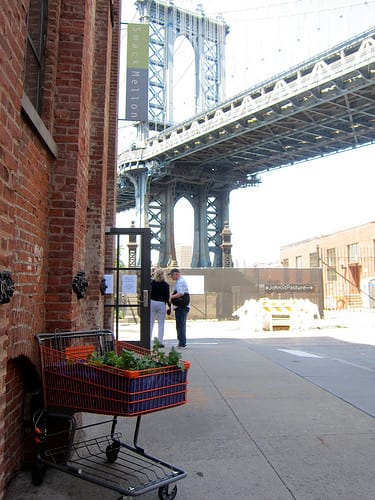
In collaboration with Smack Mellon’s FOODshed, Alloy real estate development, and Brooklyn Grange, artist Andrea Reynosa planted a 6,000-square-foot field with clover that is sprouting red flowers alongside the Manhattan Bridge. The space was formerly a parking lot. The flourish of vibrancy is temporary, but Reynosa is planning that through the clover, a site that might otherwise be an empty construction lot will have life that will in turn ameliorate the soil before a condominium moves in.
Similarly, much of the work in FOODshed is about improving the balance between urban and natural, while accepting that places like Brooklyn aren’t going to return to farmland anytime soon. Another of the neighborhood projects is from Brooklyn-based artist team Kristyna and Marek Milde. Called À la cart, the artists corralled some shopping carts into vegetable gardens at Old Fulton Street, and in Smack Mellon are coordinating food workshops focused on what can be grown collaboratively on the city streets.


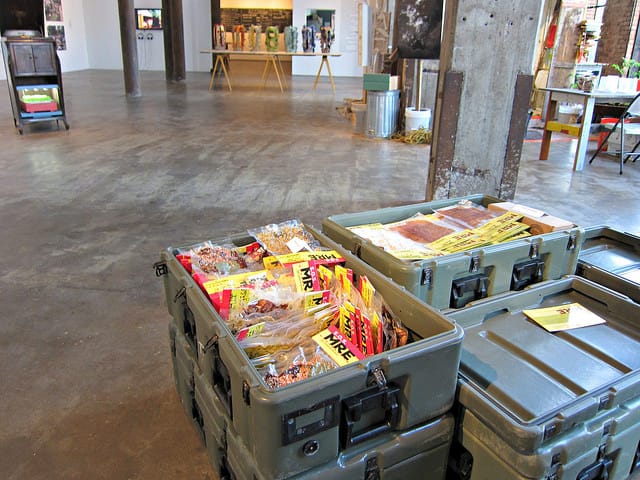
Some of the projects are more whimsical, such as Jenna Spevack’s “domestic microfarms” that transform furniture and a record player into apartment-scale growing spaces. More conceptual is Rochester-based Leila Nadir and Cary Peppermint’s “OS Fermentation: Collaborative Hacks, with Fruits, Vegetables, and Microbes.” The EcoArtTech duo’s project has custom computer sensors monitoring the fermentation of organic material in realtime to show color levels, pH, and oxygen, generating a digital relay of the biological processes we often forget. Staten Island-based Tattfoo Tan, meanwhile, takes it to the extreme with his “NEAKA (New Earth Apocalypse Knowledge Advancement),” preparing for a devastating disaster by examining processes of dehydrating food waste into new material. (An accompanying giant metal catamaran arrived after my visit, emphasizing the scale of peril.)
This Wednesday, Smack Mellon is hosting a panel discussion on creativity in urban and rural farming with some of the artists and members of the sustainable food community. As part of the current art and ecology trend, there is definitely a chance here for community engagement with agriculture in New York City with the diversity of projects and public programs. However, the strongest piece is still outside the gallery, that stretch of clover by the bridge offering some fleeting beauty in a reclaimed space before the high-rise, perhaps the best tact ecology has in a city that will not stop developing any time soon. Yet as a collaboration between real estate, park, and artist, it definitely offers hope in how greenery can be a component of the urban landscape.
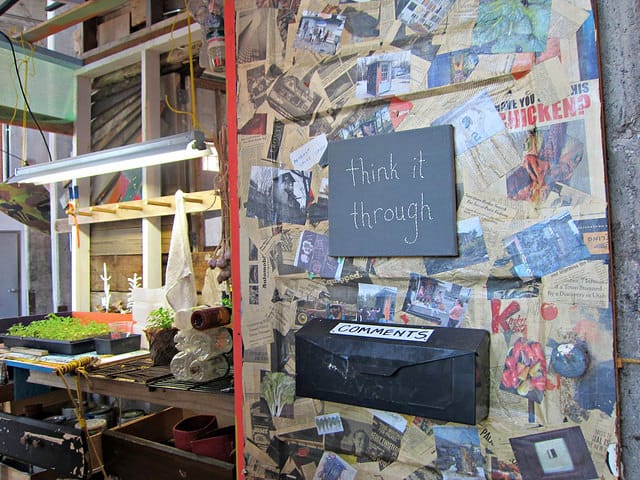
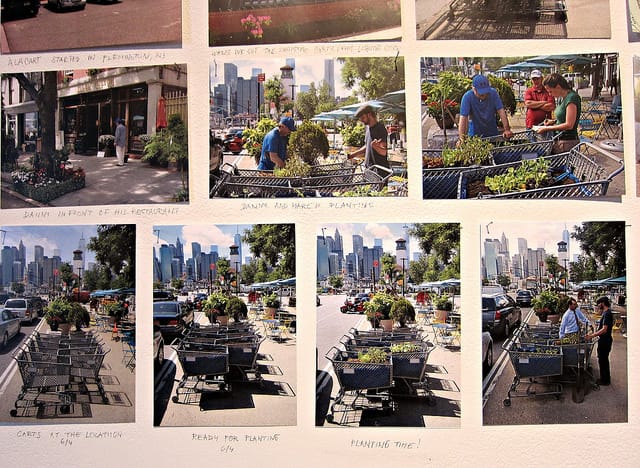

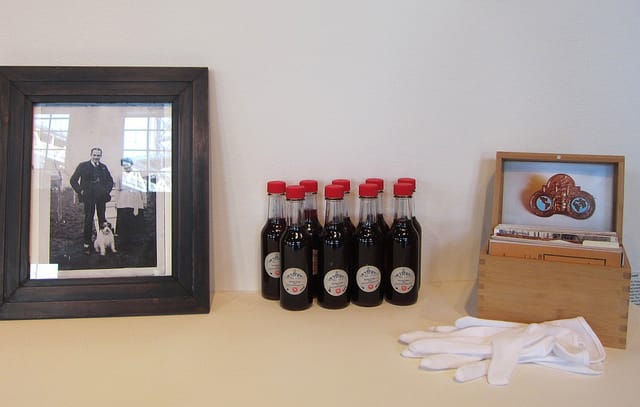
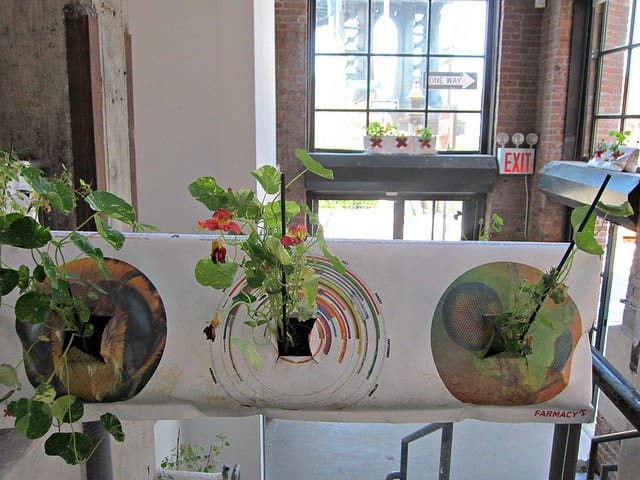
FOODshed continues at Smack Mellon (92 Plymouth Street, Dumbo, Brooklyn) through July 27.





